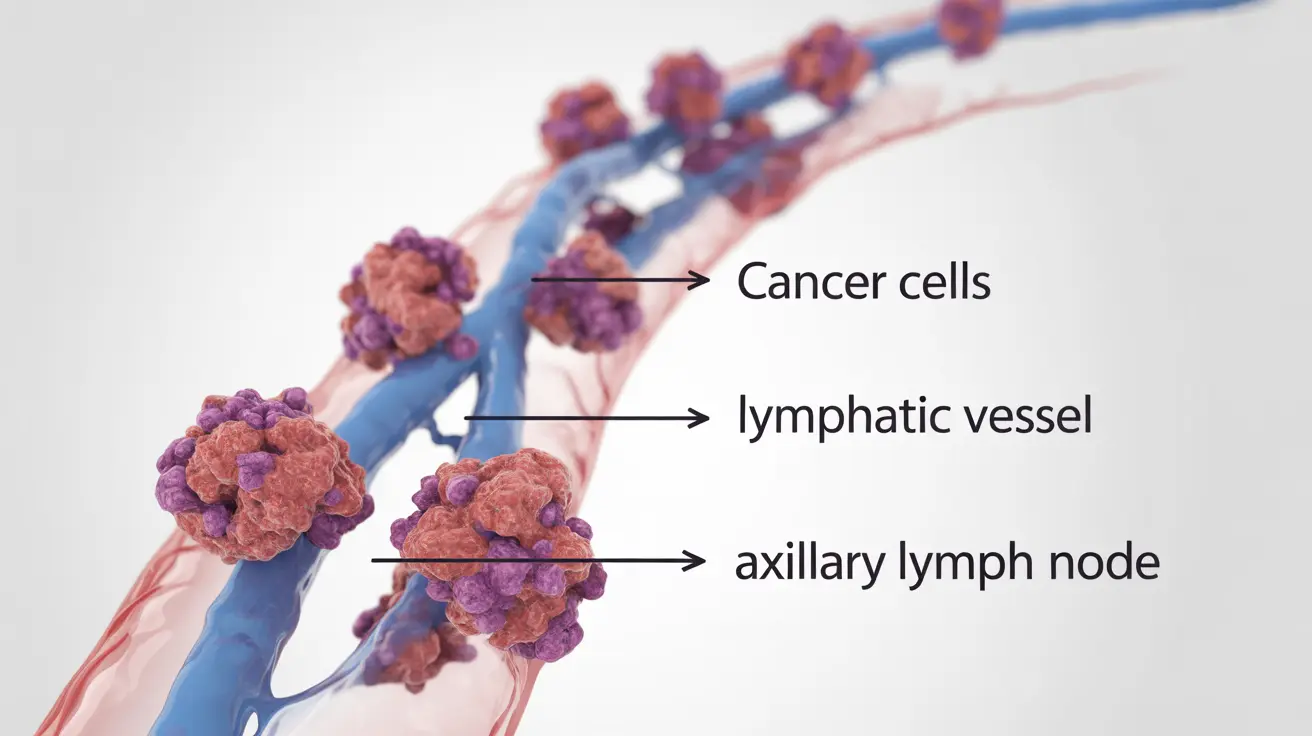When dealing with breast cancer, understanding how it affects the lymph nodes is crucial for both diagnosis and treatment planning. The lymphatic system plays a vital role in our body's immune response, and when breast cancer spreads to nearby lymph nodes, it represents an important milestone in the disease's progression that requires specific medical attention.
This comprehensive guide explores how breast cancer interacts with the lymphatic system, the various methods doctors use to evaluate lymph node involvement, and what this means for treatment options and long-term outcomes.
The Relationship Between Breast Cancer and Lymph Nodes
Breast cancer cells can break away from the primary tumor and travel through the lymphatic vessels to nearby lymph nodes. The lymph nodes most commonly affected in breast cancer are those in the armpit (axillary nodes), above the collarbone (supraclavicular nodes), and near the breastbone (internal mammary nodes).
When cancer cells reach the lymph nodes, it indicates that the disease has gained the ability to spread beyond its original location. This information is crucial for determining the cancer's stage and developing an appropriate treatment plan.
Diagnostic Procedures for Lymph Node Assessment
Physical Examination
During routine breast cancer screening, doctors perform careful physical examinations of the lymph nodes in and around the breast area. They check for enlarged nodes, unusual firmness, or other changes that might suggest cancer spread.
Imaging Studies
Various imaging techniques help evaluate lymph node involvement, including:
- Mammography
- Ultrasound
- MRI
- PET/CT scans
Biopsy Procedures
Two main surgical procedures are used to examine lymph nodes for cancer cells:
Sentinel Lymph Node Biopsy (SLNB)
This less invasive procedure involves removing and testing the first few lymph nodes where cancer cells are most likely to spread. Special dyes or radioactive substances help identify these sentinel nodes.
Axillary Lymph Node Dissection (ALND)
This more extensive procedure removes multiple lymph nodes from the armpit area when cancer spread is suspected or confirmed.
Impact on Treatment and Recovery
Treatment Planning
Lymph node status significantly influences treatment decisions, including:
- The extent of surgery needed
- Whether radiation therapy is necessary
- The type and intensity of chemotherapy
- The potential need for targeted therapies
Potential Side Effects
Lymph node surgery can lead to several side effects, with lymphedema being the most significant concern. This condition causes swelling in the arm or breast area due to disrupted lymphatic drainage. Other possible side effects include:
- Limited arm movement
- Numbness or tingling
- Increased risk of infection
- Shoulder pain
Managing Long-term Outcomes
Proper management of lymph node-related complications requires ongoing attention and may include:
- Regular monitoring for signs of lymphedema
- Physical therapy exercises
- Compression garments when necessary
- Lifestyle modifications to reduce risk of complications
Frequently Asked Questions
What does it mean if breast cancer has spread to the lymph nodes?
When breast cancer spreads to lymph nodes, it indicates that cancer cells have moved beyond the original tumor site. This affects the cancer's staging and typically requires more comprehensive treatment approaches, though many cases remain highly treatable with appropriate medical intervention.
How do doctors check for cancer in the lymph nodes near the breast?
Doctors use multiple methods to check lymph nodes, including physical examination, imaging studies (mammogram, ultrasound, MRI), and biopsy procedures. The most definitive way to determine if cancer is present is through a lymph node biopsy.
What are the differences between sentinel lymph node biopsy and axillary lymph node dissection in breast cancer surgery?
Sentinel lymph node biopsy removes only the first few nodes where cancer is likely to spread, using special dyes or radioactive tracers to identify them. Axillary lymph node dissection is more extensive, removing multiple nodes from the armpit area, and is typically performed when cancer spread is known or highly suspected.
Can removing lymph nodes during breast cancer surgery cause lymphedema or other side effects?
Yes, lymph node surgery can cause side effects, with lymphedema being the most significant concern. Other potential side effects include limited arm movement, numbness, and increased infection risk. The risk is generally higher with axillary lymph node dissection compared to sentinel node biopsy.
How does lymph node involvement affect breast cancer treatment options and prognosis?
Lymph node involvement typically leads to more aggressive treatment plans, potentially including more extensive surgery, radiation therapy, and systemic treatments like chemotherapy. While positive lymph nodes can affect prognosis, many patients still achieve successful outcomes with appropriate treatment.




